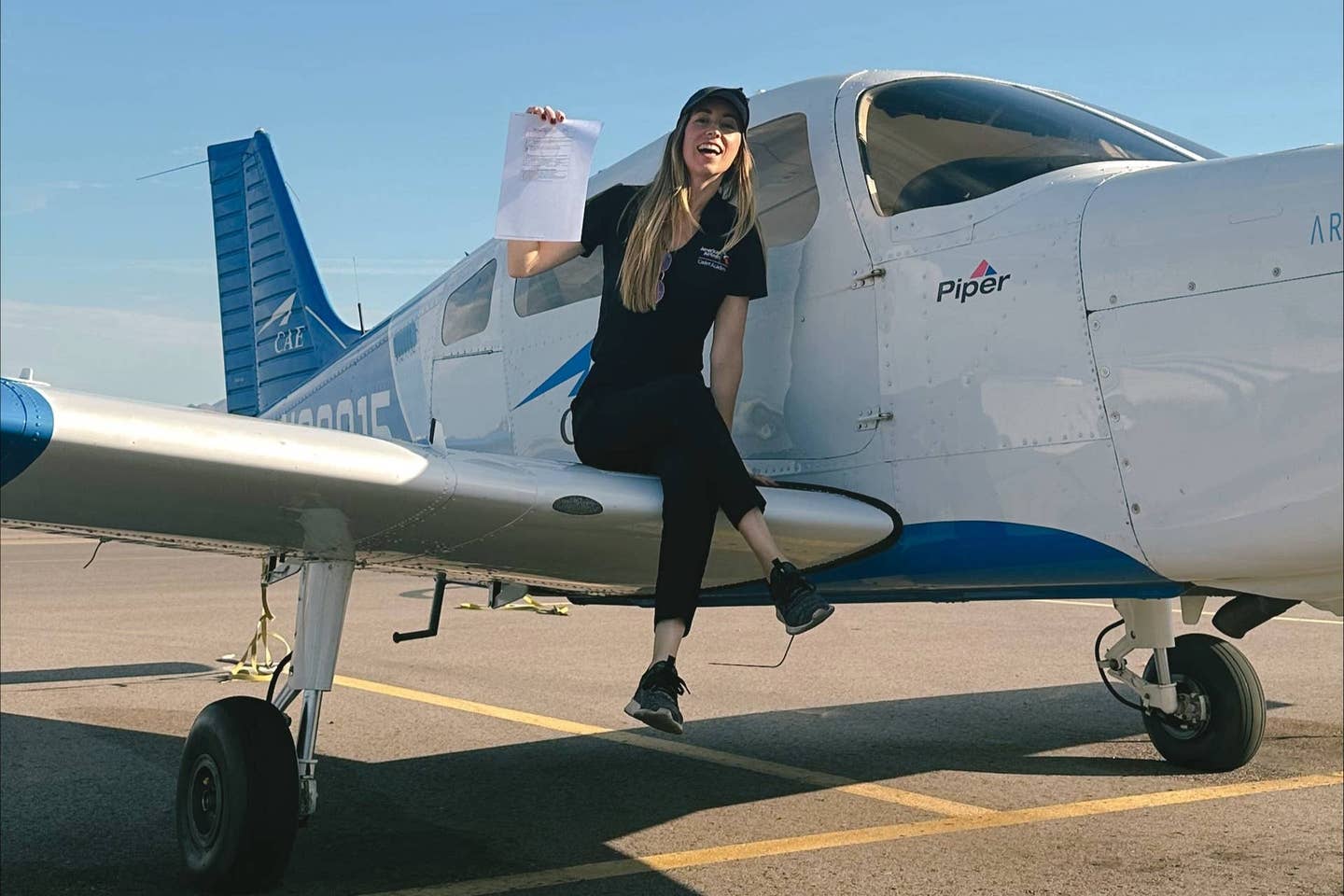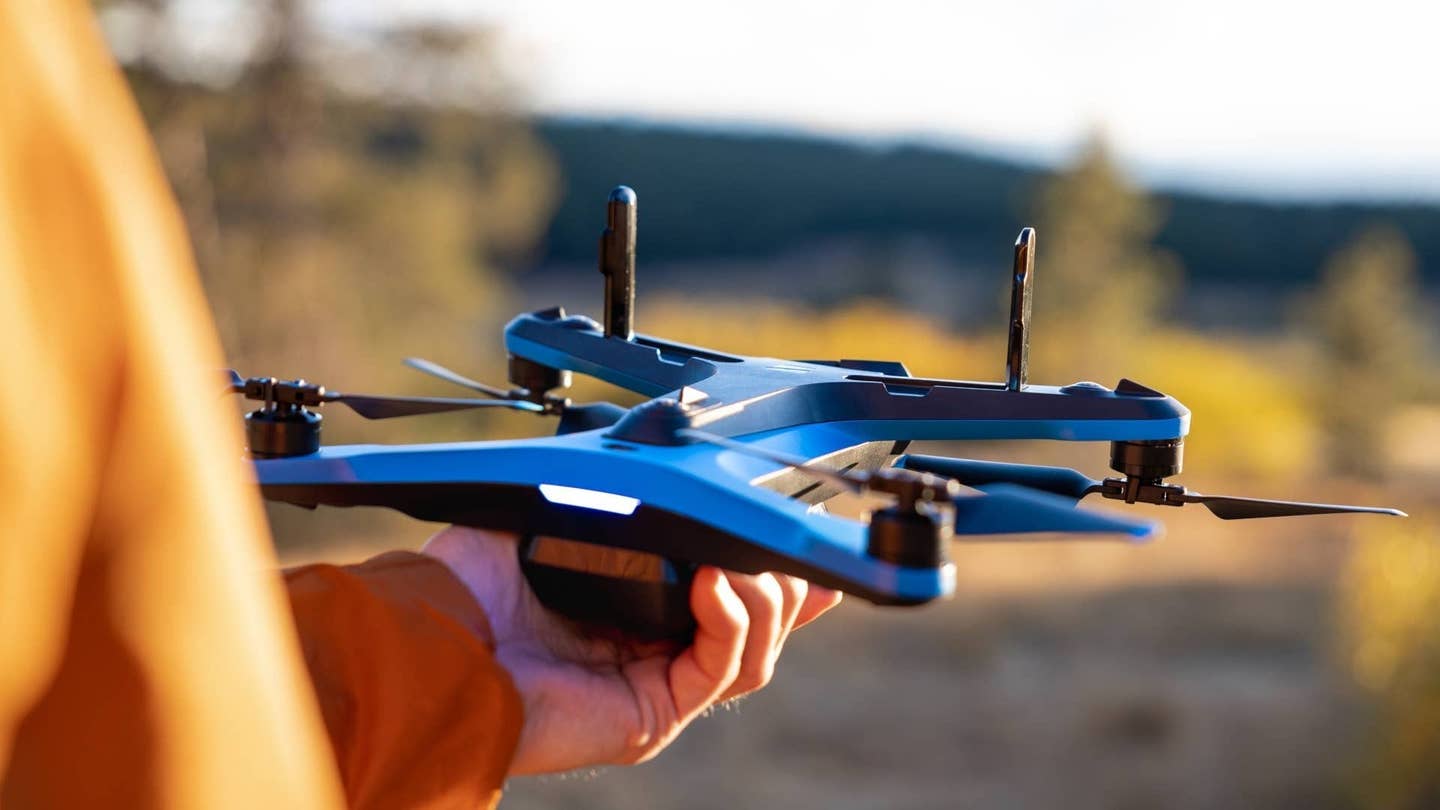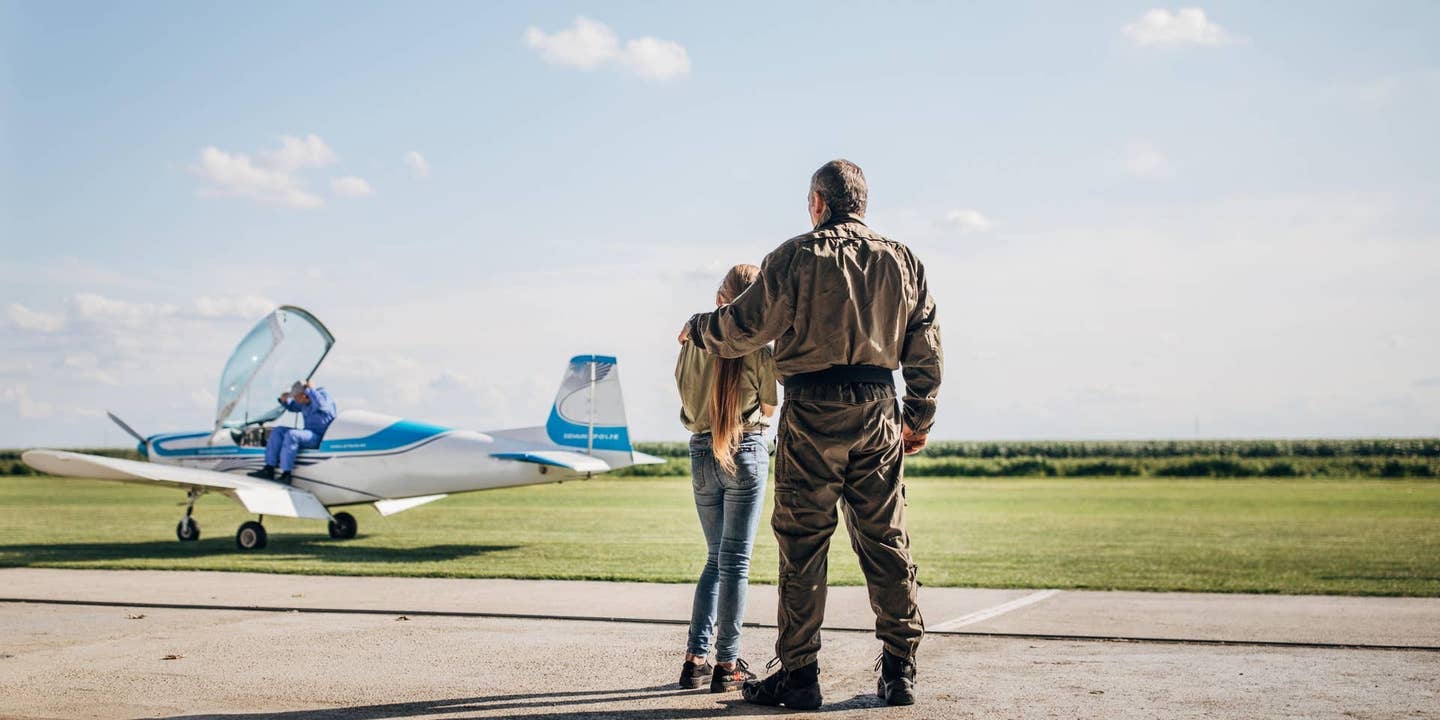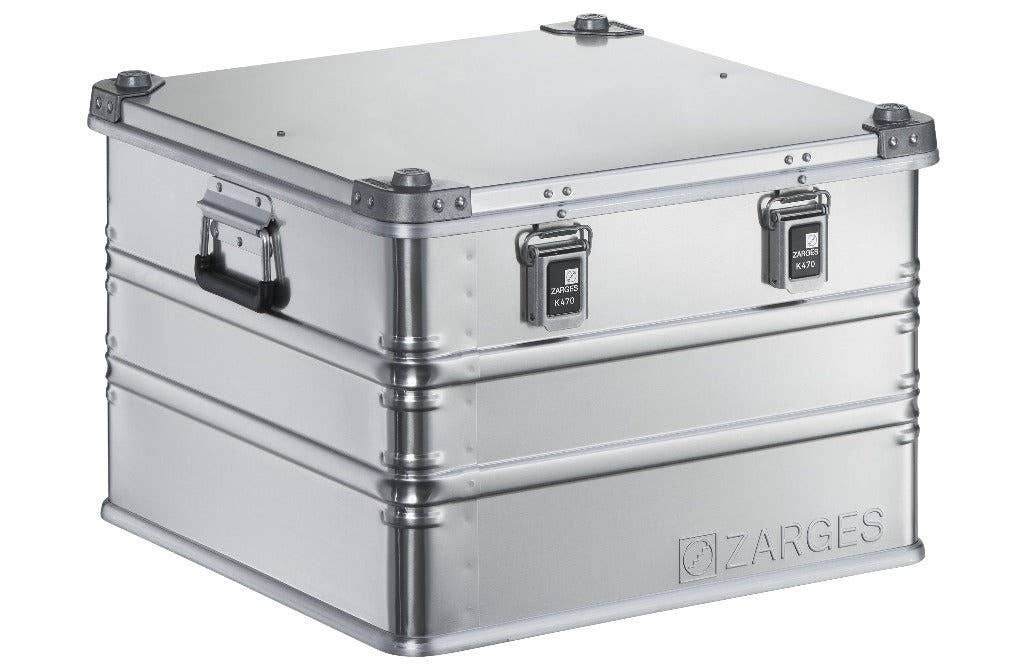Guide to TSA Firearm Rules for Private Flights
Are you thinking about flying with a gun? Let’s explore the TSA rules on firearms for private flights.
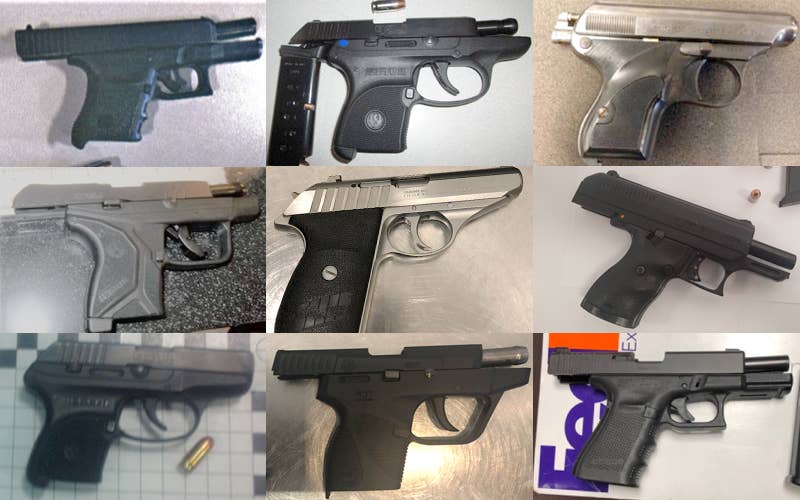
TSA rules for flying with a gun are the same whether traveling privately or commercially. [Courtesy: Transportation Security Administration]
The Transportation Security Administration (TSA) establishes the rules for flying with firearms. The universal TSA firearm regulations apply to all private and airline flights and must be complied with when traveling.
Ultimately, firearms, and ammunition are prohibited at TSA passenger screening checkpoints. Therefore, it is the passenger’s responsibility to correctly prepare, package, and declare every firearm as checked baggage.
In addition to TSA’s firearm rules, it is each passenger’s responsibility to be familiar with and abide by applicable firearms laws, regulations, and policies from the aircraft’s owner, U.S. Customs and Border Protection (CBP), and local/state authorities at the arrival and departure locations. Understanding firearms policies and planning accordingly ensures an uninterrupted, safe, and legal travel experience.
How to Fly With a Gun: Private vs. Commercial
TSA rules for flying with a gun are the same whether traveling privately or commercially. Passengers may only transport unloaded firearms in a locked, hard-sided case as checked baggage.
Ammunition must also be transported as checked baggage. It should be packaged in the same locked, hard-sided case as the firearm, if it meets the ammunition packaging regulations listed in this article, or separately from the firearm. Ammunition must be in original manufacturer packaging or in packaging specifically designed to carry small amounts of ammunition. Packaging must be made of fiber, wood, plastic, or metal.
Firearms and ammunition are prohibited at TSA passenger screening checkpoints. Upon arrival at the airport, the properly packaged firearm and/or ammunition must be taken directly to the lobby ticket counter and declared to the ticket agent.
It is important to note that private airplane owners, CBP, and local authorities at the arrival and departure locations may have additional requirements for traveling with firearms and ammunition. Passengers should contact these individual organizations and authorities for carriage policies prior to arriving at the airport.
Choosing the Right Firearm Case for Air Travel
Choosing the right firearm case to travel with a gun ensures the safety of the public and a smooth check-in process for the passenger declaring the weapon. Passengers should always check with their private jet company about guidelines, exclusions, limitations, and fees when attempting to fly with guns.
Hard-Sided Firearm Cases
Hard-sided cases are the only ones approved by the TSA when flying with a gun. These cases have rigid outer shells that are ideal for long-distance transportation. The hard shell also offers impact resistance, which is ideal for baggage handling at the airport.
Some hard-sided cases come with built-in locks, while others are padlock compatible to meet TSA requirements. These locks help prevent unauthorized access. Most hard cases even feature watertight seals, further protecting guns from the elements.
Pistol Hard-Sided Cases
The Dual Pistol Case, for example, protects handguns from the elements and abuse. It is resistant to extreme weather and rough handling encountered during travel. A pressure-release valve equalizes pressure inside and outside the case during air travel. The case is padlock compatible and meets all TSA requirements.
Rifle and Shotgun Hard-Sided Cases
The Plano All Weather Gun Case protects rifles and shotguns from extreme conditions. A built-in pressure-release valve equalizes pressure caused by altitude and temperature changes. It also features a rugged, industrial-strength exterior construction and preperforated pluck foam to protect firearms from dents and scratches. The case is padlock compatible and meets all TSA requirements.
Soft-Sided Firearm Cases
Soft-sided cases are not approved by the TSA when it comes to transporting firearms during air travel. These simply don’t offer the same level of protection as hard-sided cases. However, some private jet companies allow a hard-sided case to be placed inside a soft-sided one if the hard-sided carrier is secured per the above guidelines.
Trigger Locks and Additional Firearm Security Measures
A trigger lock is a two-piece device that fits over a gun’s trigger guard to prevent it from being pulled and the gun from being fired. It is an additional and inexpensive option to help prevent firearm tempering, theft, and accidents while flying.
Ammunition Transportation Guidelines
Ammunition, like firearms, cannot be placed in carry-on bags or brought to a security checkpoint. It is only allowed in checked bags. However, passengers should always check with their private jet company about guidelines, exclusions, limitations, and fees when attempting to fly with ammunition.
Ammunition Packaging
Ammunition must be packaged in the same locked, hard-sided case as the firearm, if it meets the ammunition packaging regulations listed in this article, or separately from the firearm. Ammunition must be in original manufacturer packaging or in packaging specifically designed to carry small amounts of ammunition. Packaging must be made of fiber, wood, plastic, or metal.
Ammo Cans for Bulk Ammunition
Ammo cans can be used when transporting ammunition separately from the firearm. When choosing an ammo can, passengers should consider its size, material, and whether it is waterproof and airtight, as well as added features, including locks, handles, and stacking options.
The Sheffield 12629, for example, is a weather-resistant ammo storage can designed for pistol, rifle, and shotgun ammo storage. It is a sackable, lockable, and reliable ammo storage solution for transporting ammunition during air travel.
Magazines and Separate Storage Requirements
Firearm magazines and clips for packing ammunition must completely enclose any ammo. This can be accomplished by securely covering the exposed portions of the magazine or by placing the magazine in a pouch, holder, or holster.
Best Practices for Transporting Firearms on Private Flights
Follow these best practices to ensure a smooth experience for transporting firearms and/or ammunition as a private flight traveler:
- Communicate your intentions to transport firearms/ammunition with the private jet company before you arrive for your trip.
- Follow necessary TSA gun rules.
- Bring a copy of your gun license and/or permit.
- Label the firearm and/or ammunition container.
- Verify that your firearm and magazines are unloaded.
- Place your unloaded firearm and/or ammunition inside a lockable, hard-sided container.
- Use TSA-approved locks to secure the container.
- Discreetly transport your locked firearm/ammunition container to the airport.
- Go to the check-in counter and declare the locked case that contains your firearm/ammunition.
Specific Considerations for Different Firearms
Due to the variety of firearms available on the market (e.g., pistols, revolvers, rifles, shotguns, antique/replica firearms, and unique firearms), it may be necessary to obtain a custom case to fit the firearm. Gun owners should consider the following when purchasing a custom gun case:
- Ensure it protects against dust and moisture.
- Evaluate how well it guards the firearm against knocks and falls.
- Choose a durable one that will last with regular use, such as a hard-sided one.
- Ensure it can be locked and is capable of completely securing its contents.
Regardless of the firearm type, the case must meet all of the TSA’s rules on guns.
Stay Safe by Following TSA Firearm Rules
Firearms and ammunition are prohibited at TSA passenger screening checkpoints. Since the TSA’s primary mission is to protect the flying public, anyone discovered in possession of a weapon at a TSA passenger screening checkpoint will be immediately handed over to local/state law enforcement, resulting in an arrest and a penalty.
It is a requirement to correctly prepare, package, and declare every firearm as checked baggage in a locked, hard-sided case.
Passengers are encouraged to research and follow guidelines for specific routes and destinations when traveling with a gun. Understanding firearms policies and planning accordingly ensures an uninterrupted, safe, secure, and legal travel experience.
FAQ
Can you fly with a gun?
Yes, passengers can fly with a gun. However, the gun must be unloaded and properly packaged in a locked, hard-sided case and declared as checked baggage.
How many locks do I need on my gun case for TSA?
At least one that only you can open, either with a key or a combination. The TSA recommends using all available lock tabs when securing firearms for air travel. Make sure you check with individual airlines and private aircraft owners for their policies as well.
Can the TSA open my gun case without me present?
No, the owner of the gun case must be present if the TSA needs to open the case. Only the gun case owner should have the combination or key to open it.

Sign-up for newsletters & special offers!
Get the latest FLYING stories & special offers delivered directly to your inbox

